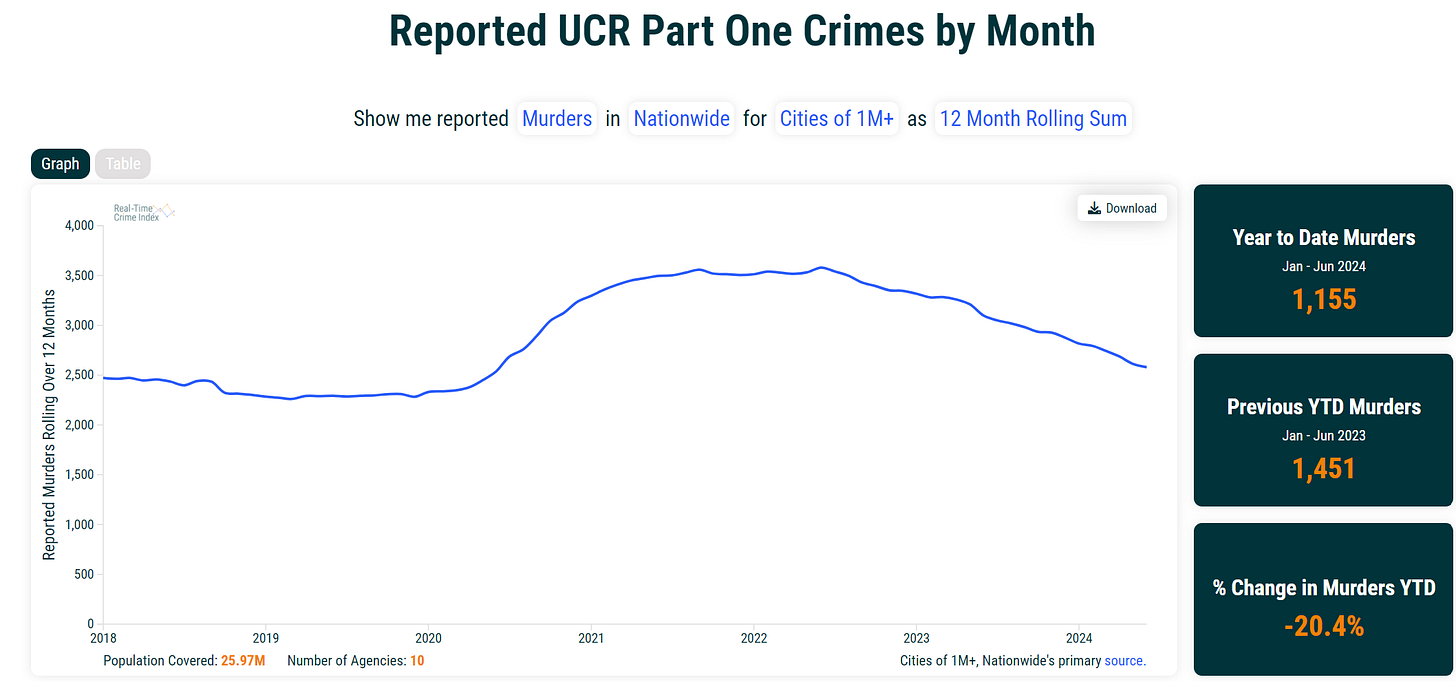The Real-Time Crime Index launched earlier this month providing monthly crime data through June 2024 from over 300 agencies nationwide. The first big test, however, was seeing how quickly we could turnaround data for July and how many agencies could be gathered in just 2.5 weeks.
Turns out it’s nearly all of them.
There were 304 agencies in the June 2024 Real-Time Crime Index nationwide sample covering around 76 million people and there are 295 agencies in the July 2024 sample covering around 75 million people.
There wasn’t much difference in the crime trend through July though the large scale declines in murder and auto theft are more pronounced.
Here’s the murder trend rolling over 12 months:
And here is the YTD table of all crimes through July:
There were 20 total agencies that were in the June 2024 sample that didn’t provide July 2024 data while there were 11 agencies that did not have data in the June 2024 sample but do have it in the July 2024 sample.
One thing to keep in mind is that the RTCI is probably slightly overstating these declines due to the nature of the reporting process. I hope to write about it in the coming weeks, but the counts we have each month aren’t complete because agencies still have time to report incidents. The numbers added are usually small, but a 9 percent decline in property crime through July right now might end up being an 8 or 8.5 percent decline if you revisit the same sample through July in a few months.
The Real-Time Crime Index is a new and evolving project, and each month’s update may include improvements to data calculations and visualizations. There were two changes of note made to the RTCI for the July 2024 update:
A small tweak was made in how rape is calculated in agencies that only report NIBRS data. Previously, only offenses under offense code 11A (forcible rape) were included as rape offenses, but the RTCI has been updated to include offense codes 11B and 11C as well to match the RTCI’s translation from NIBRS to SRS with the FBI’s.
The RTCI data visualization added the ability to filter the nationwide sample by city size. At present, users can filter by cities of 1 million or more, 250,000 to 1 million, 100,000 to 250,000 and under 100,000 to better understand how crime differs in different population sizes.
Our goal is to update each month as close to the 15th of each month. This schedule is necessary since many agencies have until the 15th of each month to send the most recent month’s data to their state UCR program. I won’t write about each month as the product becomes standardized but will update periodically as major changes are made or crime trends become noteworthy.
Please check it out at RealTimeCrimeIndex.com and let us know what you think!



